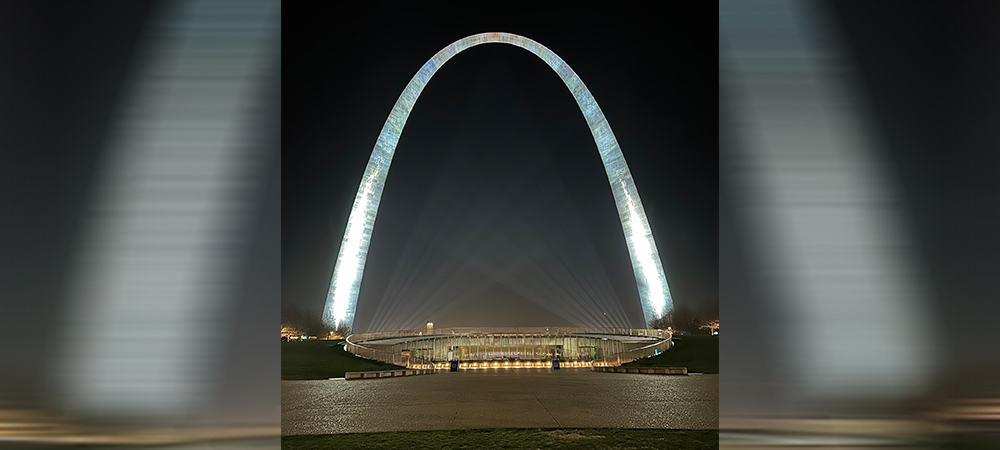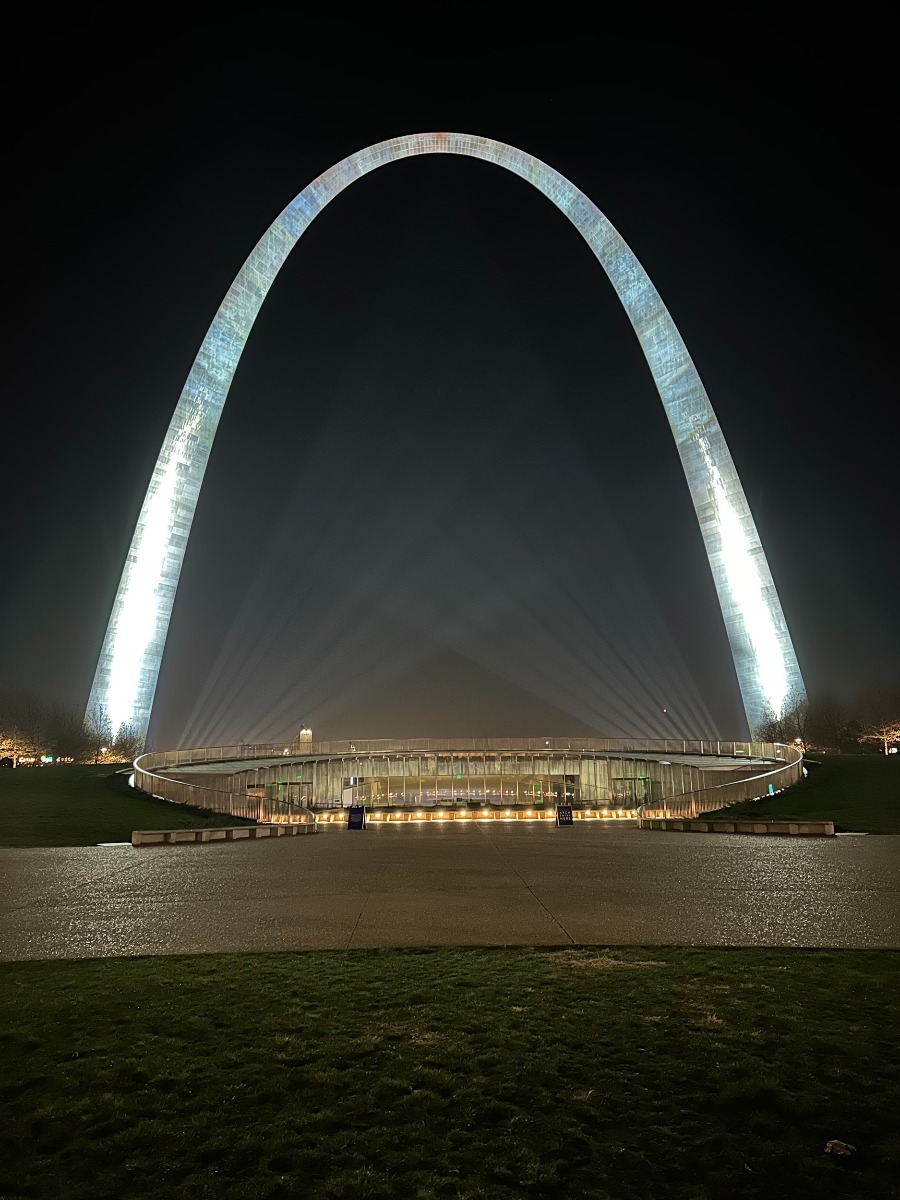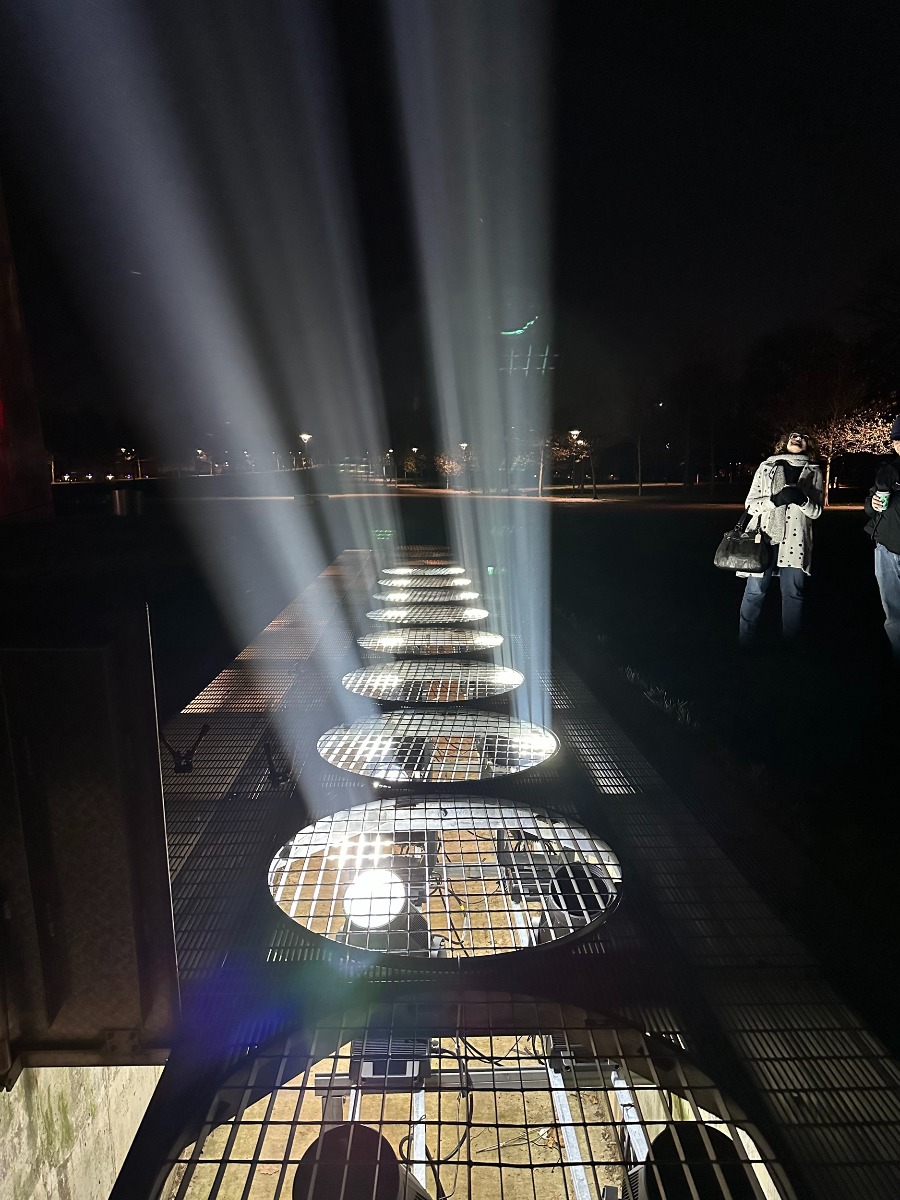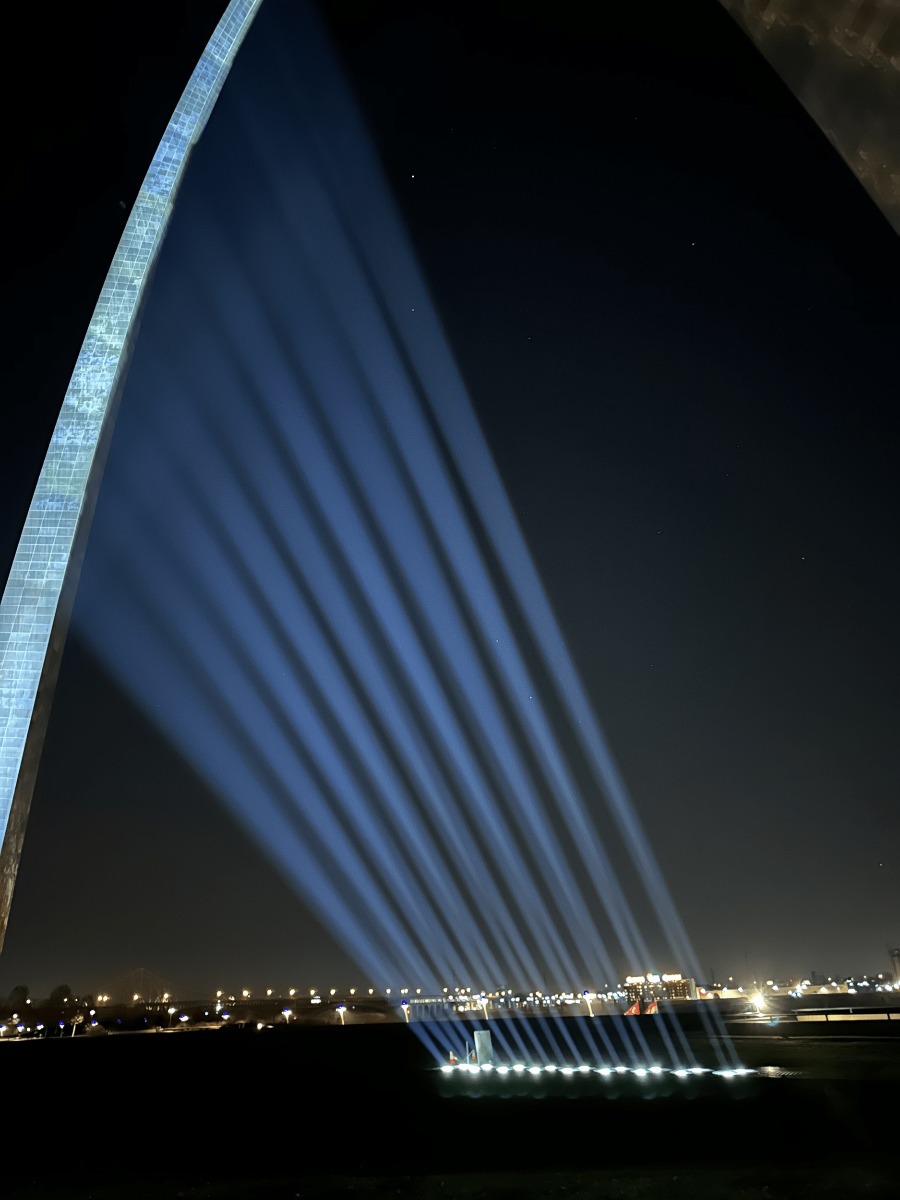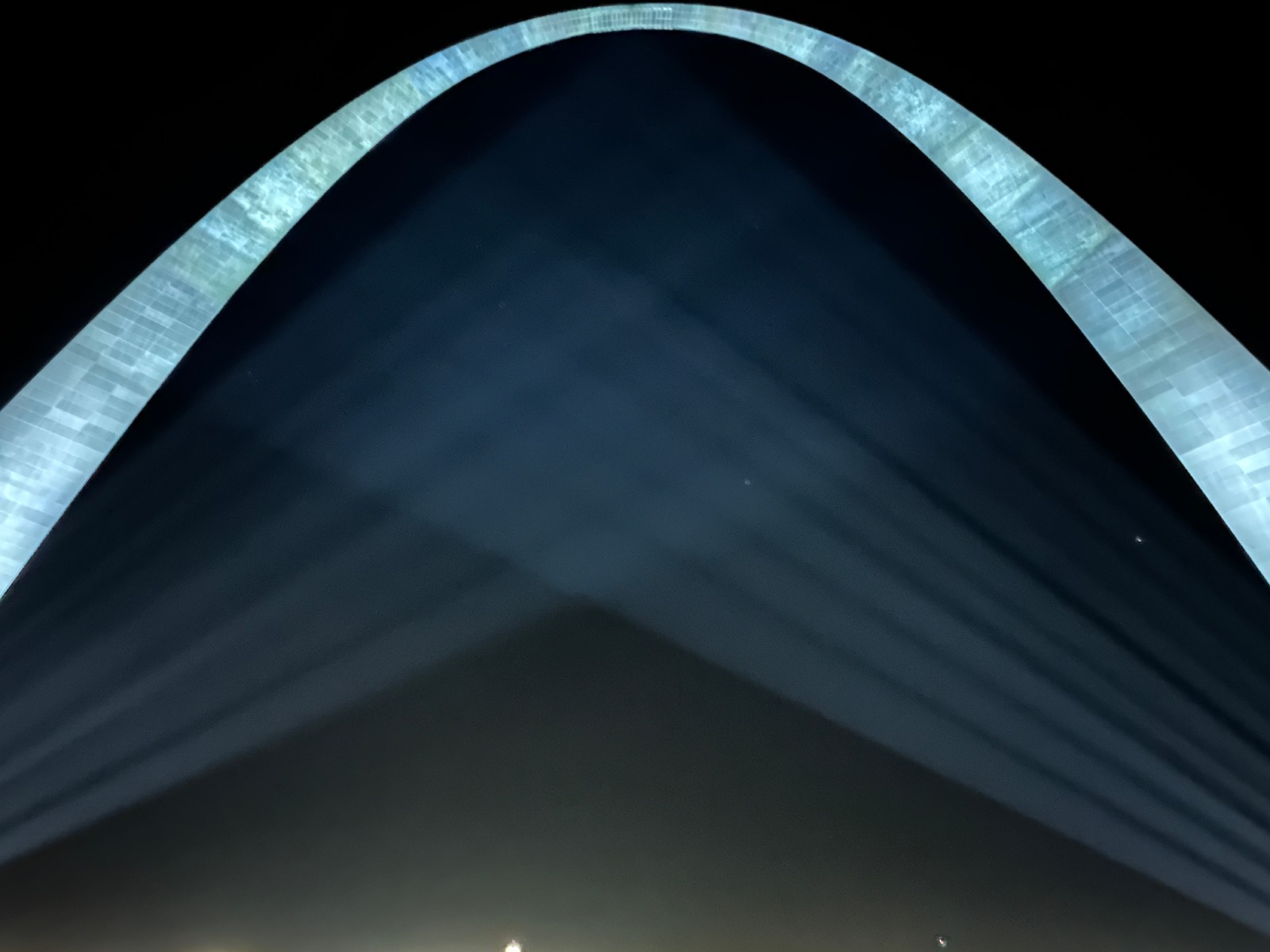The new lighting - a substantial upgrade from the prior system—is brighter, more precise, more efficient and easier to maintain. It’s better for migratory birds, too!
One of America’s most iconic monuments, the Gateway Arch in St. Louis, shines more brightly than ever thanks to a new and improved lighting system from Technical Productions, Inc. (TPI) that features 76 state-of-the-art Proteus Brutus lighting fixtures from Elation.
‘The Arch’ has stood on the banks of the Mississippi River in St. Louis since 1965 as America’s symbolic “Gateway to the West.” The Gateway Foundation, a private nonprofit that first lit the structure in 2001, funded the lighting upgrade. Under its direction, Technical Productions, Inc. spearheaded the specification, design, and installation of the new lighting system with focus design provided by Randy Burkett of Reed Burkett Lighting Design.
Time for an upgrade
Burkett was hired by the Gateway Foundation to light the Arch back in the late 1990s, a design that included luminaires installed in underground pits, then renewed the lighting several years ago using 7K xenon sources. Michael O'Keefe, COO of TPI, proposed a lighting upgrade after years maintaining the outdated xenon lamp lighting, a system that was not only proving unreliable and expensive to upkeep but wasn’t showing the Arch in its best light. “Parts were breaking and the cost in lens filters and lamps, not to mention the labor to change them, was very high,” O’Keefe stated. “I truly felt that we should honor our monument more consistently and more efficiently with the best available fixtures.”
Proteus Brutus
The solution lay in Elation’s Proteus Brutus, an IP65-rated automated light with a high efficiency 1200W peak field LED engine and 75,000 total lumens of output. The fixture, part of Elation’s weatherproof Proteus line which TPI has used on previous projects, was selected after careful consideration of its specification and a successful on-site test. “The on-site tests were pivotal to the acceptance of the product,” Burkett remarks. “It was the only way to prove that the intensity, beam management, framing, CCT and other key parameters would fulfill the needs – which they did.”
Nick Vincenty, Director of System Design and Engineering at Technical Productions, was heavily involved in the project and touches on the challenge involved. “We needed to shoot 650 feet straight up at a target 25 ft wide, which isn’t an easy thing to do. This was the first fixture we saw that not only had the output to do it but the zoom optics to do it accurately, plus it’s IP65. It’s really the only LED fixture that met the requirement.” O'Keefe adds that they looked at other fixtures but that nothing compared to the Proteus line. “I had a lot of confidence in it and a lot of confidence in Elation.”
Gateway Arch
The Gateway Arch is a complex shape—a weighted catenary arch 54 feet (16.5 m) wide at its base narrowing to 17 feet (5.2 m) at the top. Clad in stainless steel and 630-ft tall (192 m), it is the world's tallest arch. To light the structure, 76 Proteus Brutus fixtures were placed in four existing lighting pits at the legs of the Arch, each pit covered with 12 circular slotted grates to shoot light through. The slotted grates are individually rotatable to maximize louver orientation efficiency. The pits were modified by TPI to house the 104-pound Brutus fixtures (previous fixture weight was 450 pounds!) with strut rails added that run the length of the pit to allow the fixtures to move when needed for focusing.
Zoom
Vincenty explains that the Brutus fixtures that shoot to the top of the Arch are zoomed at 4 degrees with the zoom angle widening as you work your way down the Arch. At the base, the angle widens to approximately 22 degrees (the Brutus can zoom out to 45 degrees). “The previous 7K xenon fixtures could only zoom with special filters which wasn’t very effective and we ended up losing over half of the lumens into space,” he said. “The fact that the Brutus can easily zoom to put all of the lumens on the Arch was another key selling point.”
Burkett adds that the original mock-ups from the original design process proved to be invaluable, as they found that the lighting reflections off the semi-specular Arch surface had to be managed, making certain that they would fall in areas that would not be unsightly or glary.
More precise lighting
The Proteus Brutus’s intelligent controllability gave several other advantages over the previous 7K xenon fixtures such as the ability to dim, focus and color correct more precisely. Pinpoint focus accuracy for example means there is much less overshoot so much more light is concentrated on the Arch itself, minimizing direct spill lighting into the sky. O’Keefe comments, “We then have the ability to manipulate that by frosting and smoothing it, plus we’re using templates to elongate the beam and concentrate the light onto the Arch itself.”
With the previous system, prismatic film used to elongate the beams had to be changed often because it degraded quickly. The Brutus houses several indexable beam-shaping gobos like rectangles and squares that are used to provide more precise focus onto the Arch and thus avoid light spill. This makes the Arch appear brighter while reducing flare in the night skies, an important element for protecting migratory birds who frequently pass through the Mississippi Flyway, a major migration highway.
Visual improvement
Vincenty says that although the Arch is not an easy object to light—“it’s basically like trying to light a mirror”—the difference between the old and new lighting is substantial. “It’s really like night and day. The more lighting we’re putting on the Arch, and the higher 6,500 kelvin we’re lighting it at with the Brutus, looks a lot better. Being able to have a lot more control over where we put the light and what quality of light we put there makes a big difference.”
Burkett, who worked with TPI on the final focusing, says the original design integrity is still intact today but that it has been improved using the new LED fixture technology. “This is really a story of the evolution of technologies. The Proteus has made it a better system, especially with regards to beam discipline. The Gateway Foundation are very good stewards in wanting to minimize the impact of lighting on anything other than the Arch itself and this luminaire has allowed that to happen.”
More efficient
The new lighting system has also resulted in substantial power savings, with the LED fixtures consuming only 1200 watts per unit compared to the previous arc source units at 7000 watts per unit. This 60% reduction in power consumption, coupled with the elimination of frequent lamp changes, contributes to significant savings in both energy and costs. Moreover, the Proteus Brutus incorporates a ‘sun protection’ feature, ensuring the longevity of the fixtures by pointing the lens towards the ground in the event of control signal loss, protecting the lens and components inside the fixture against sun damage.
Start-up sequence
The Arch is programmed to turn on each night from bottom to top over the course of 30 seconds, a start-up sequence programmed by Vincenty. Inspired by the light that moves across the Arch at sunset and sunrise, O’Keefe explains that the sequence holds deeper significance. “As the light moves up each leg and then meets at the top it is representative of two sides coming together to meet as one to form a gateway.” It’s an idea that he says the client loved and a daily event that has proved popular with the citizens of St. Louis.
TPI expresses gratitude to The Gateway Foundation as well as IATSE Local 6 and IBEW for their collaboration on the project. This is not the first time that TPI has lit the Gateway Arch however. In 2001, the company lit the Arch in rainbow colors to accompany the world premiere of The Wizard of Oz on Ice, earning the Paul Waturbury Award for International Lighting for their work.
The new Proteus lighting system made its debut on December 19, 2023, marking a new era for one of America’s most important icons.
Photos: Courtesy of Technical Productions, Inc.


